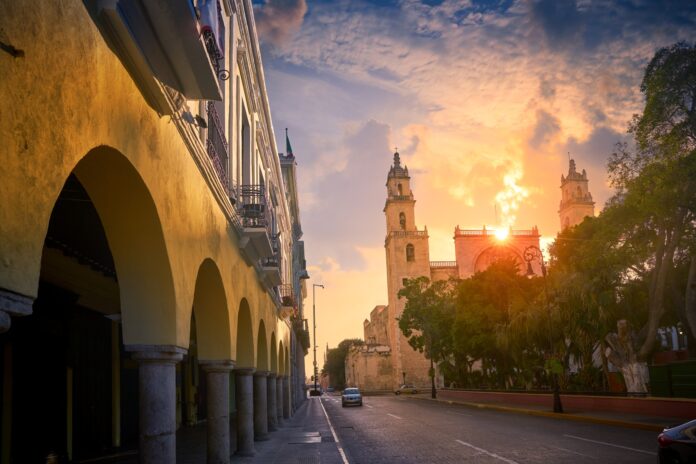Mérida is the latest city in Mexico with over a million inhabitants where a clear majority of people report living in peace. Viewed from above, the urban sprawl of their conurbated areas already has a similar shape and size. About 15 kilometers in diameter.
But it’s not something one checks every day. It happened yesterday that the candidate for mayor of Mérida, Cecilia Patrón Laviada, pointed out this territorial equivalence during a political campaign event, where she also highlighted that at least until 2020 –the year of the last census– the capital of Jalisco housed a population four times larger.
It’s important that one of the mayoral candidates is aware of the challenge of caring for the last city in Mexico with over a million inhabitants where a clear majority of people report living in peace. Can this last?
Patrón Laviada’s campaign represents the continuity of a project by PAN politicians initiated in 2012 by Renán Barrera Concha, who passed the baton to Mauricio Vila Dosal, a lawyer who in 2018 won the governorship of the state and now, in a twist of fate, could hand over the position to Barrera in 2024.
Before that, Barrera Concha must defeat his opponents in the electoral contest on June 2: the Morena candidate Joaquín Huacho Díaz Mena and Vida Gómez, from Movimiento Ciudadano. For her part, Cecilia Patrón is mainly competing with the diver Rommel Pacheco, from Morena, but also with Gerardo Ocampo, from MC.
So far, the exchange of batons between PAN members has resulted in the social stability of the Yucatecan capital, according to INEGI data.
In December 2023, only 22 percent of people in Mérida reported feeling unsafe, an improvement from 29 percent in 2022 (National Urban Public Security Survey).
But the neighborhood gets complicated. In cities of neighboring states, those numbers were notably higher at the end of 2023: Campeche, 52 percent; Ciudad del Carmen, 47 percent; Cancún, 74 percent.
Yucatecan Economic Growth
The Yucatecan economy is 35 percent larger compared to its size in 2012.
It is driven by a real estate boom, investment in commerce from companies like Mercadolibre, Amazon, and Walmart, as well as manufacturing companies that now produce everything from beer, pork, and prefabricated kitchens, to parts for cars and airplanes.
A new railway is literally on the way. The people of Mérida show enthusiasm for the freight service that the Maya Train will offer when it joins the trans-isthmus corridor, which will connect the southern peninsula with the Pacific Ocean.
These tracks can carry Asian supplies to Mérida, and once transformed, be sent to the northeast of the United States through the port of Progreso, which will be expanded. This promises more immigration to a city where almost 10 percent of the people were born elsewhere.
Less talked about is the seismic deal that CFE signed with the French company Engie two weeks ago.
This will expand the old Mayakan pipeline to double the natural gas transport capacity to 567 million cubic feet per day.
With this, CFE will feed two large generation plants: Mérida IV, with a capacity of 499 megawatts and Rivera Maya in the municipality of Valladolid, of a thousand megawatts, which will double the current capacity. Gas and electricity herald more manufacturing.
One debt the state owes its people concerns wages, Patrón acknowledges. These are growing at a faster rate than in the rest of the country, but still do not match those offered by Guadalajara or Monterrey. Factories promise better wages.
Also, more traffic, frictions (and crimes?) that the PAN member wants to tackle with improved security, lighting, infrastructure for pedestrians and bicycles.
“Watch out, as under the radar, some locals are pursuing software businesses, which could accelerate the increase in income. That and the candidates’ campaigns, I will address here in these weeks of political definition.”
Source: El Financiero






